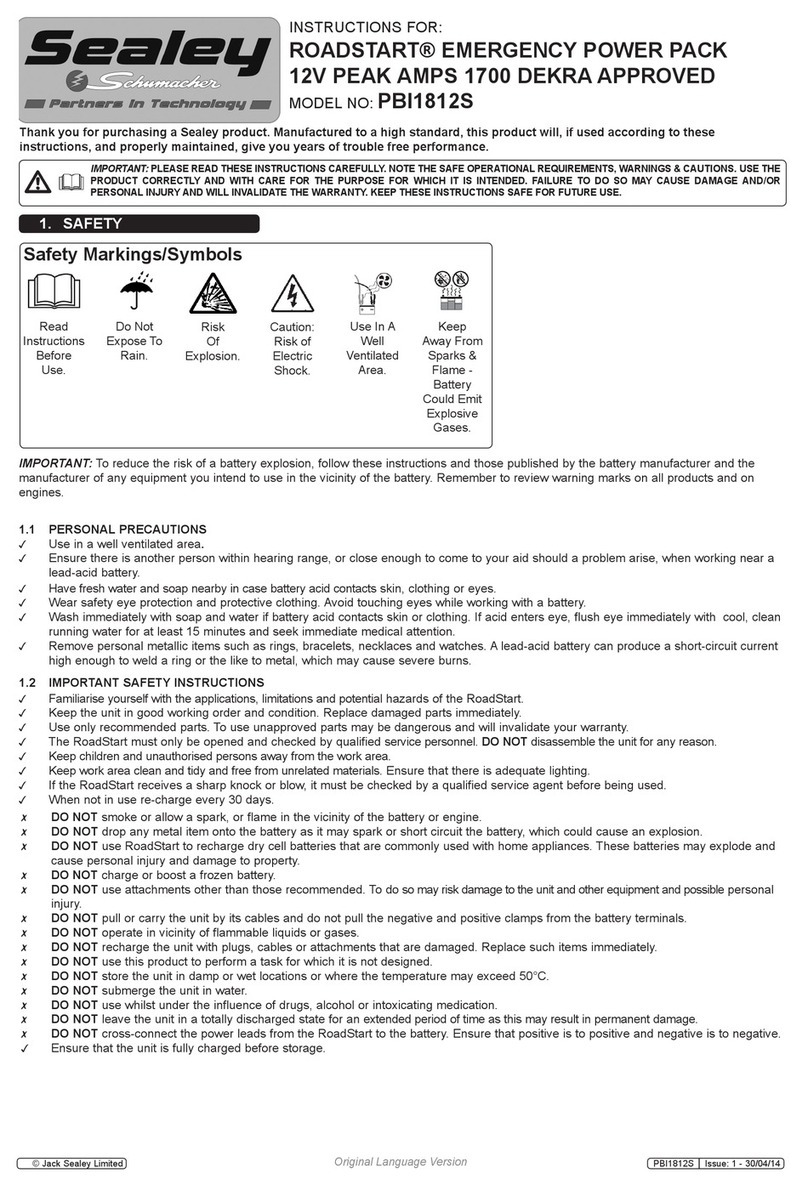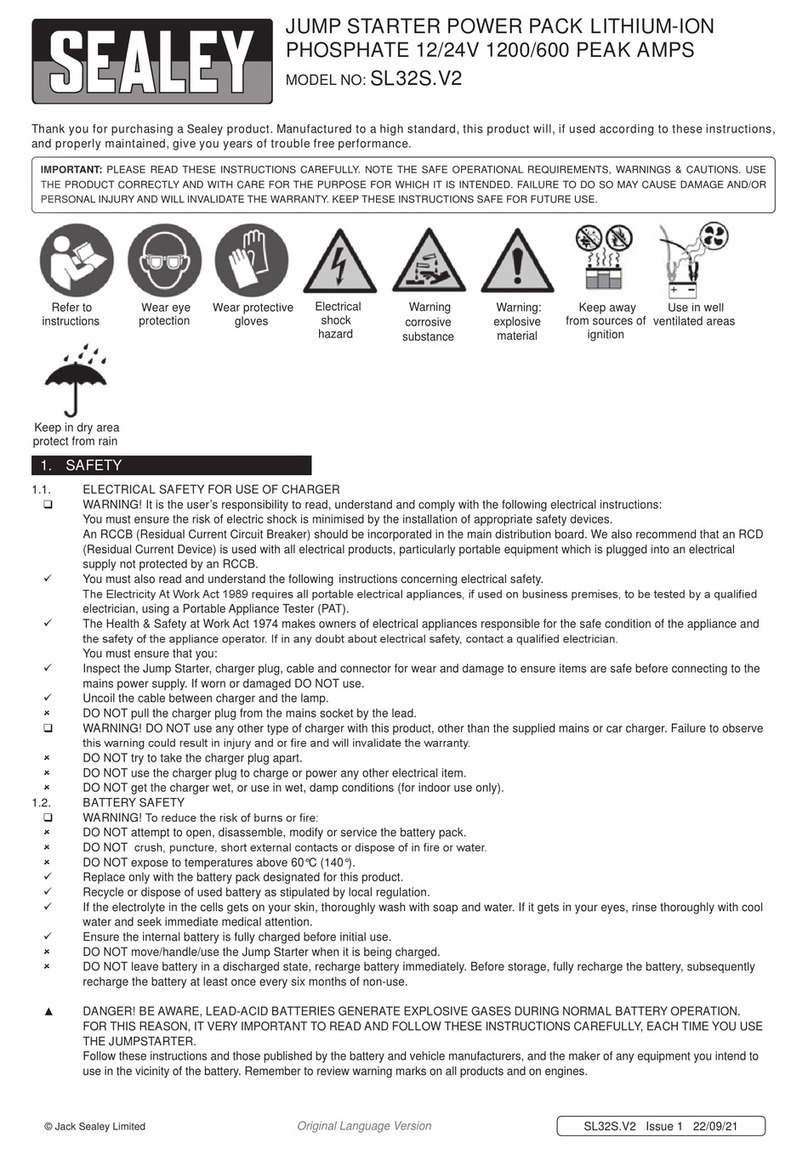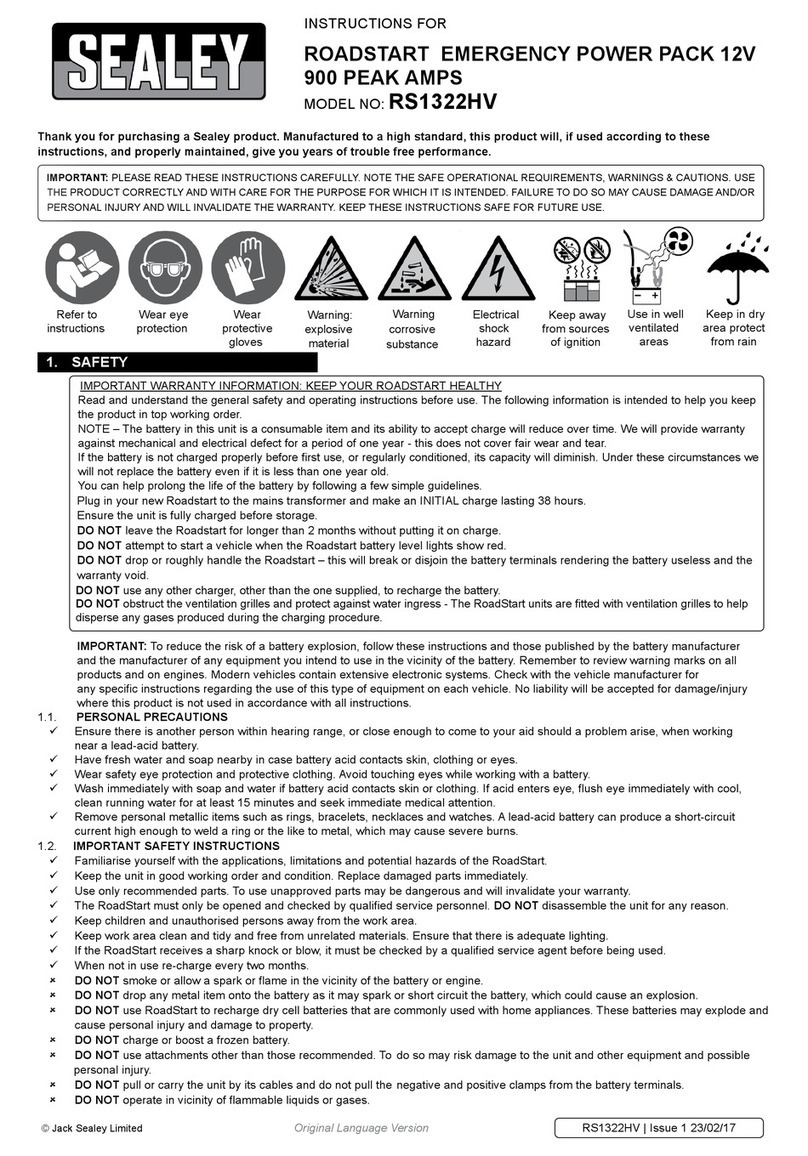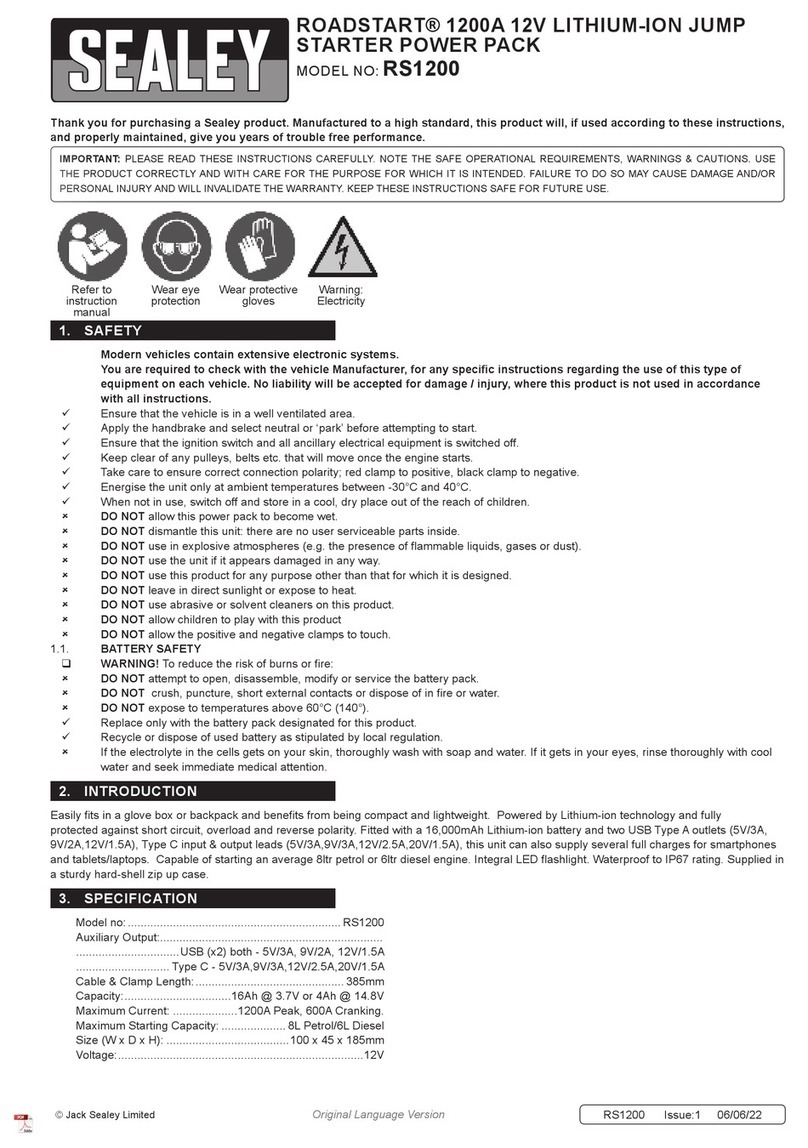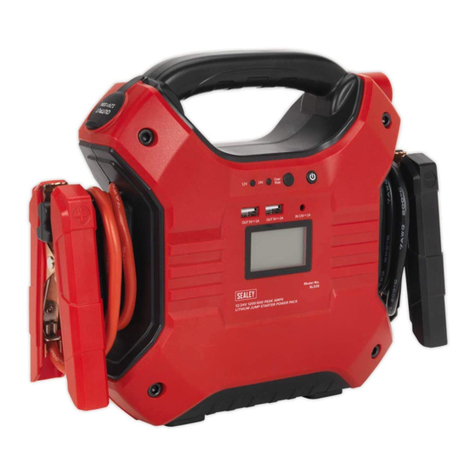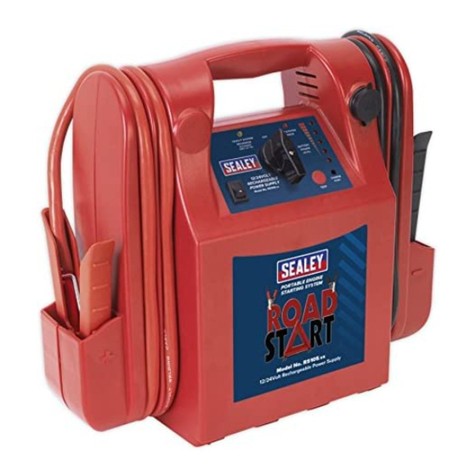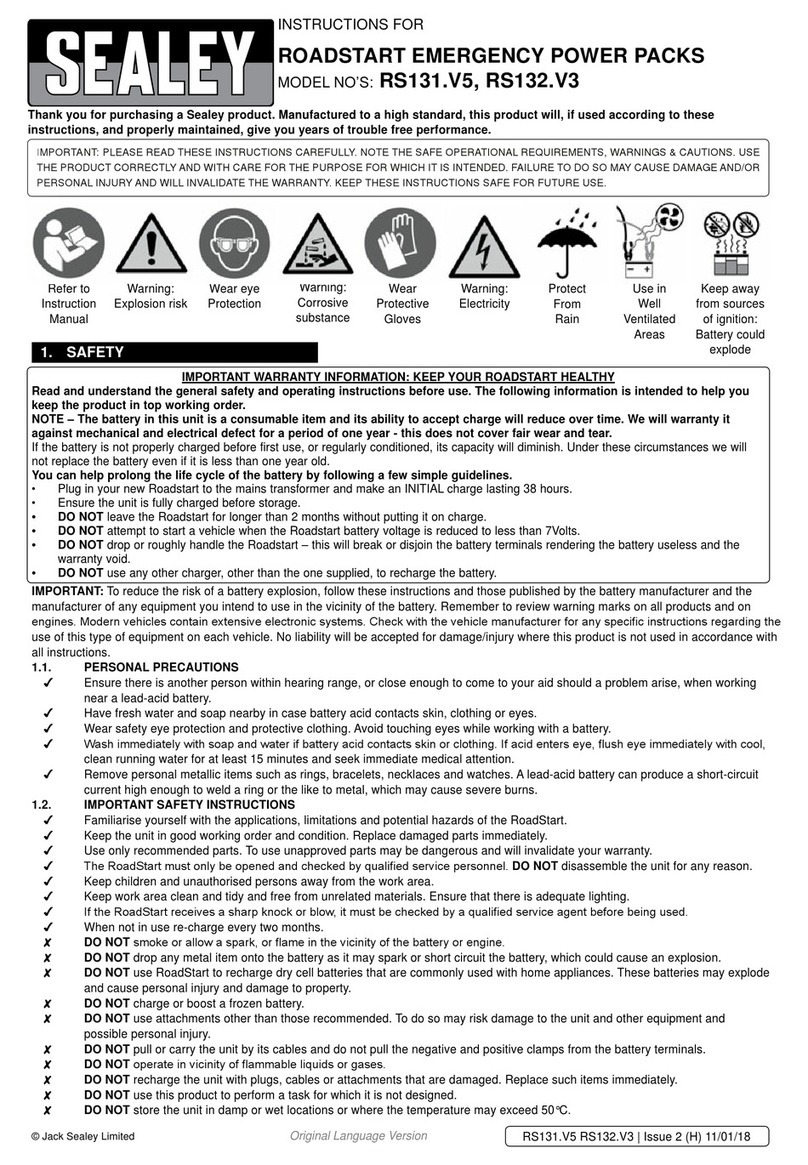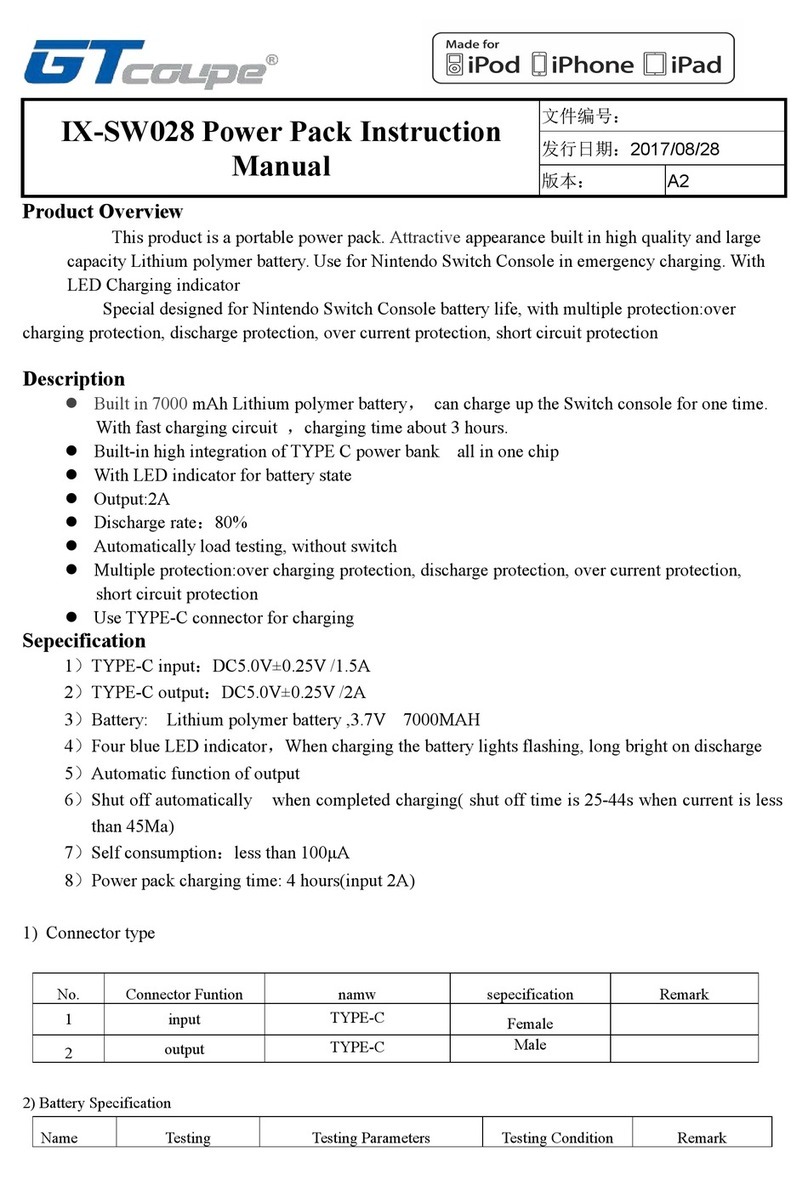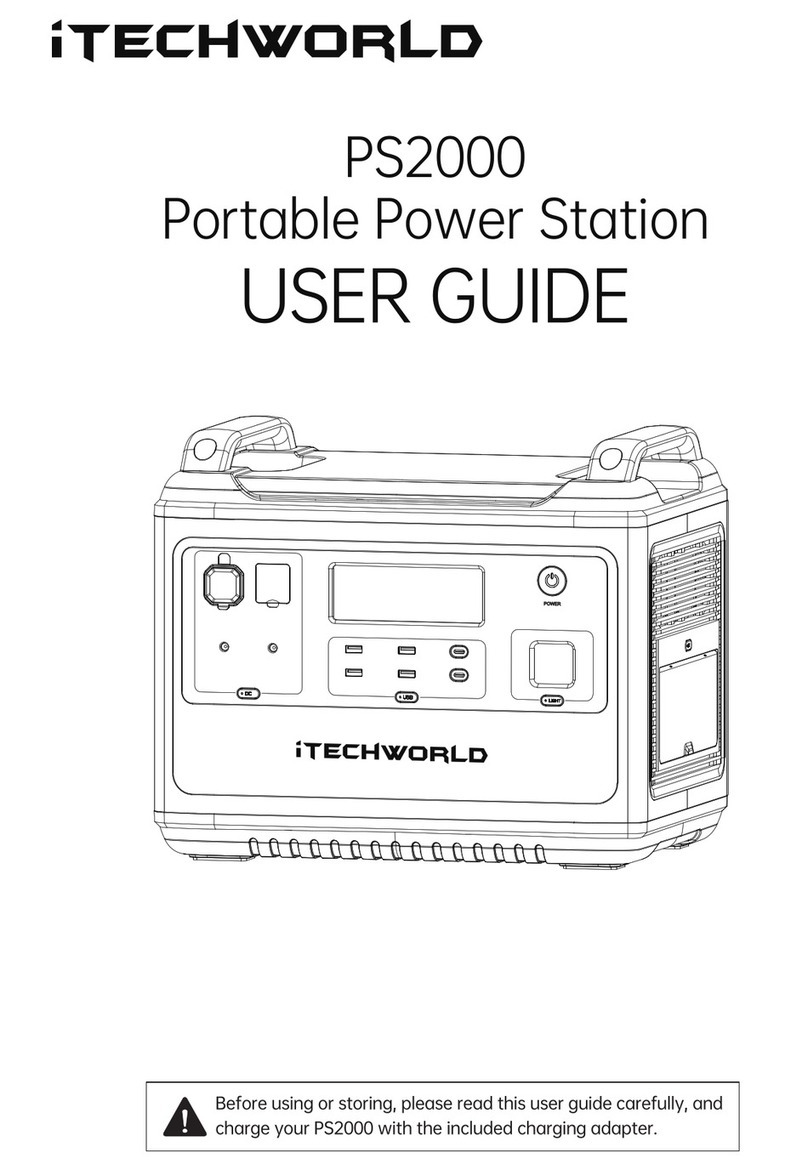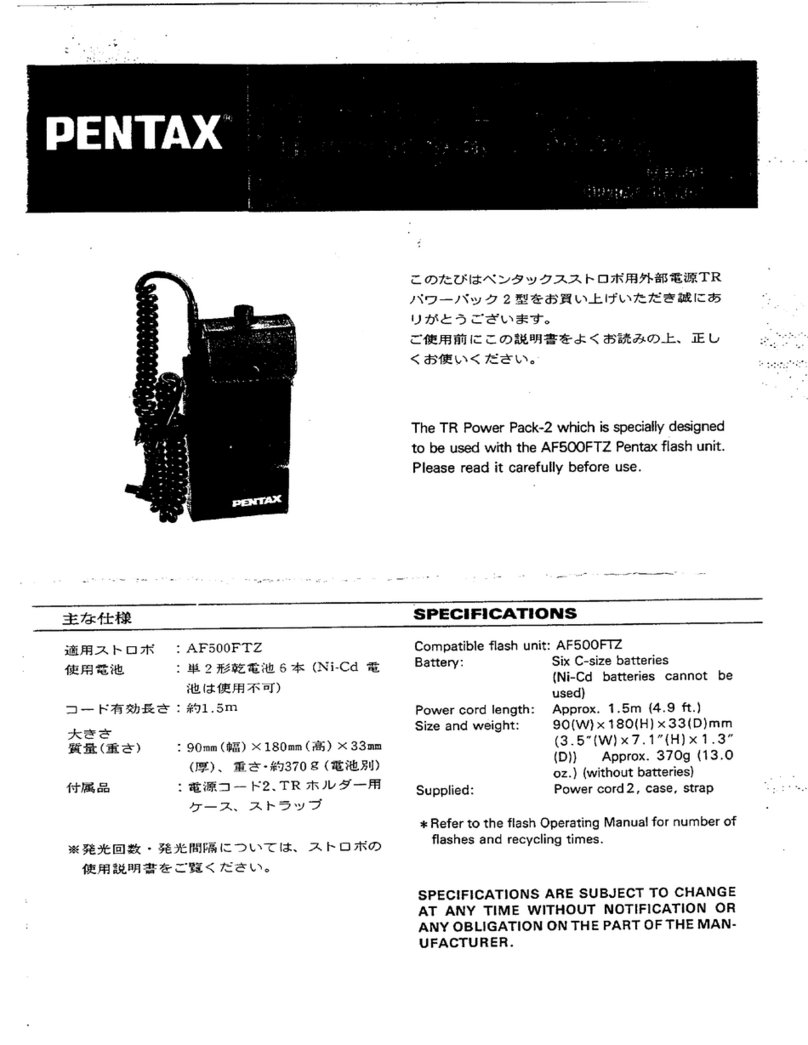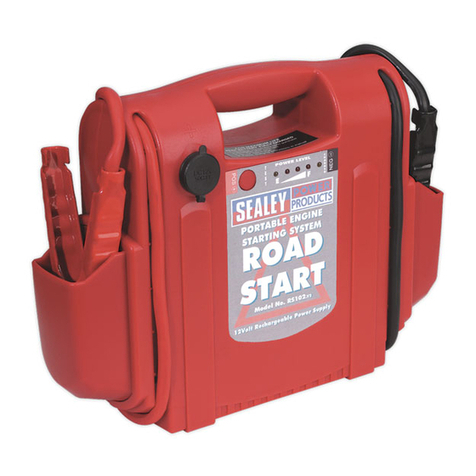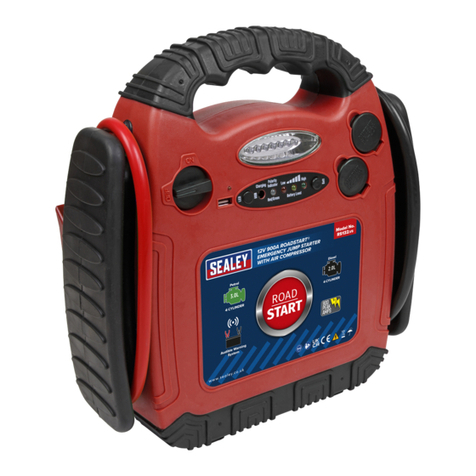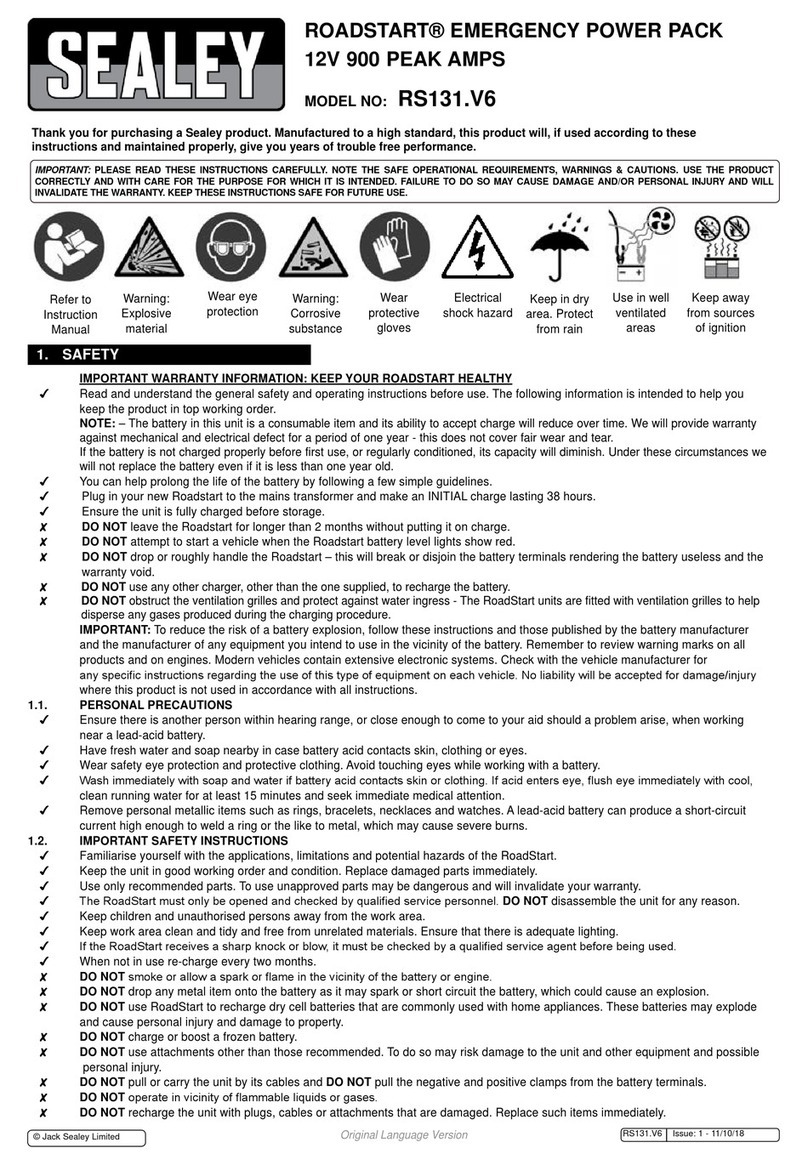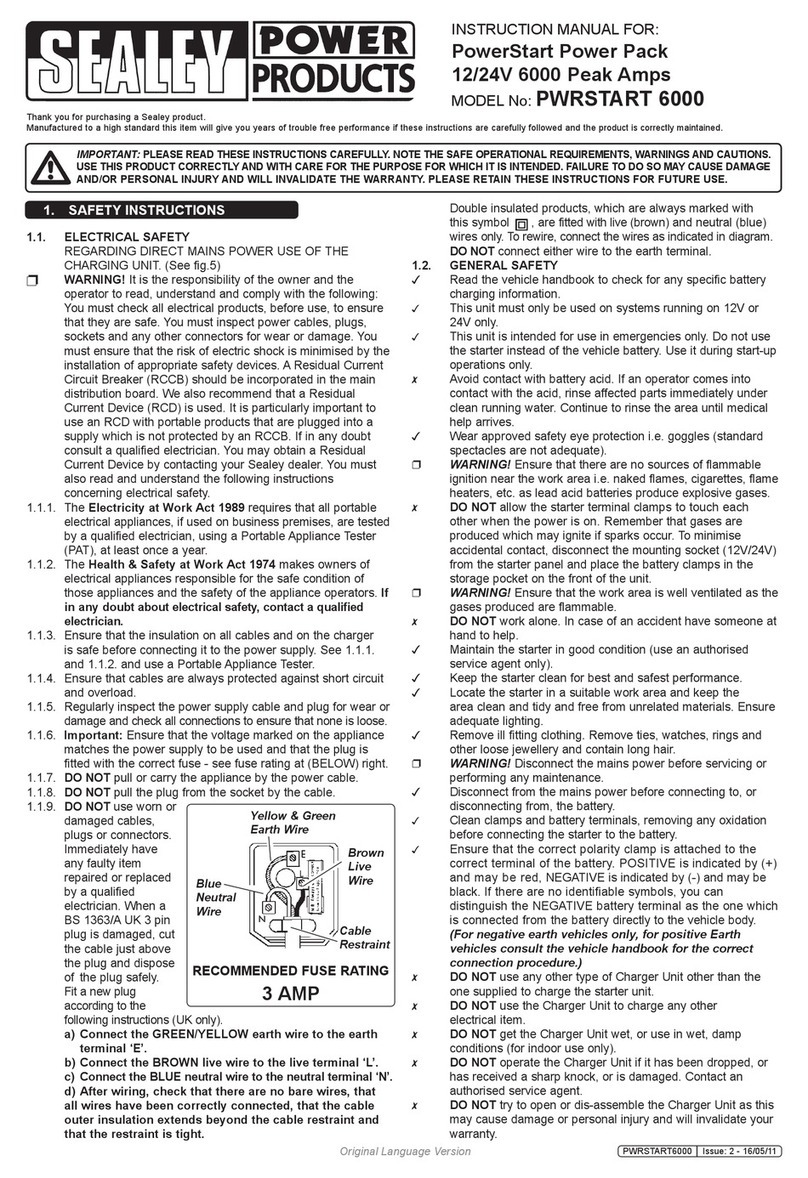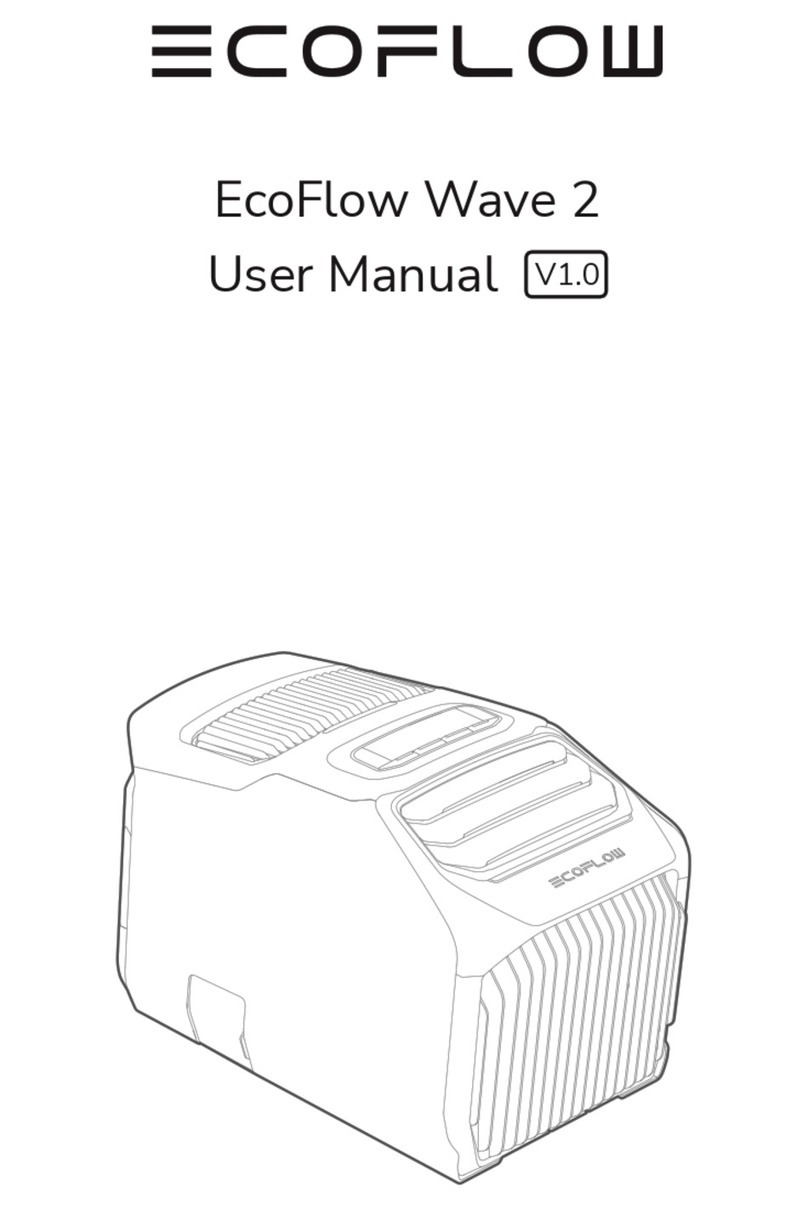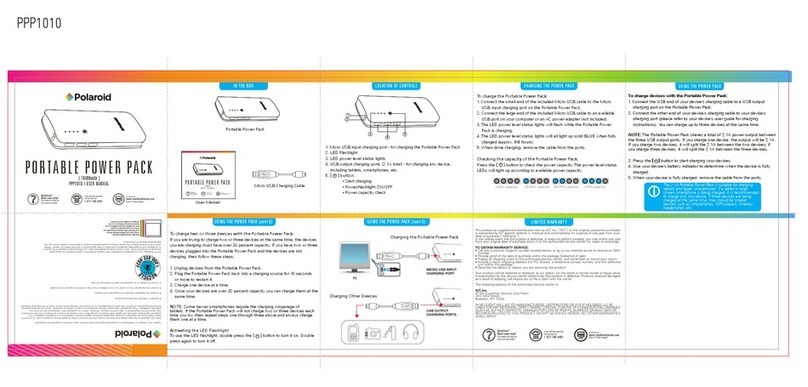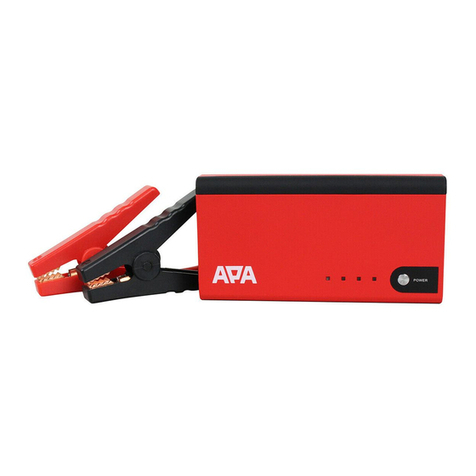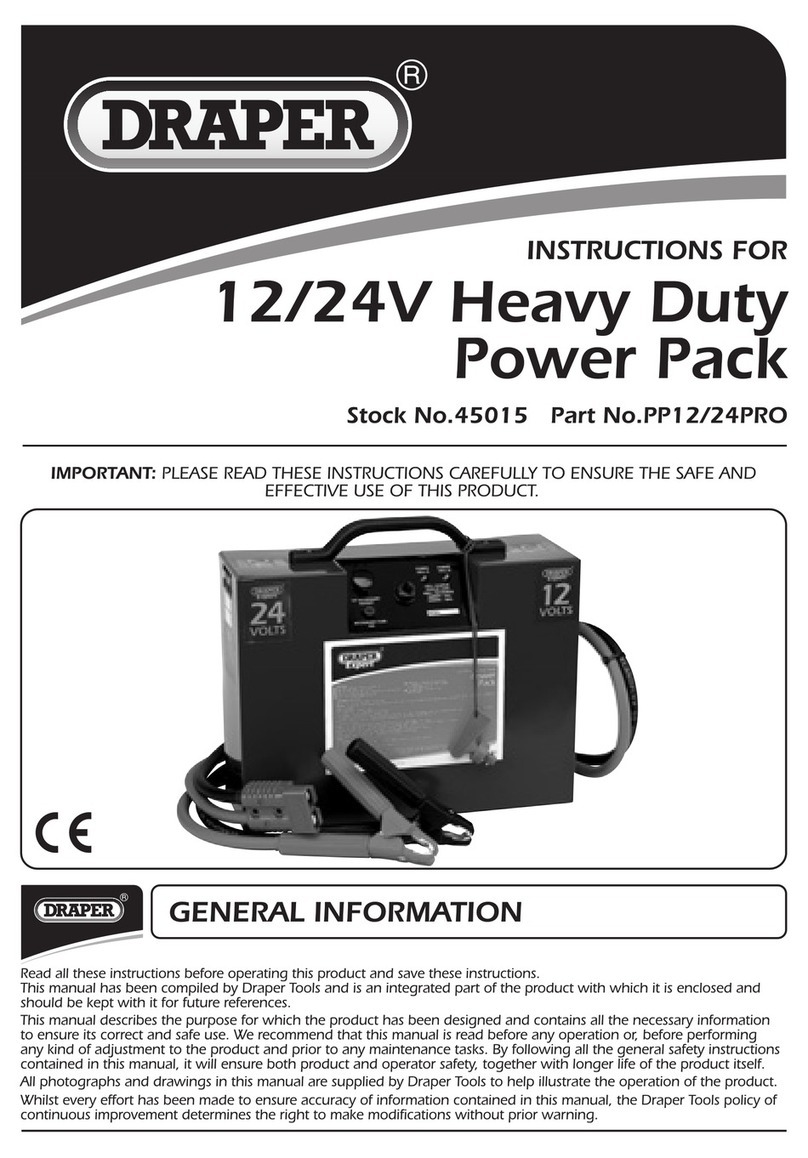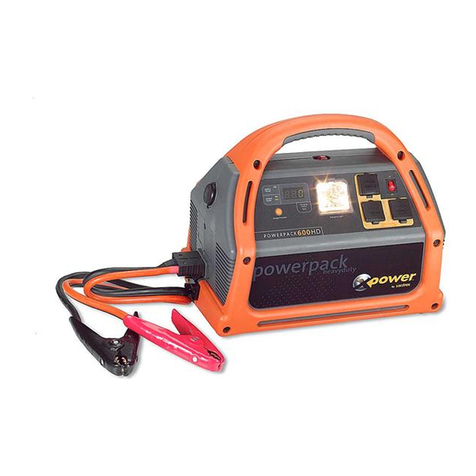
INSTRUCTION MANUAL FOR:
PowerStart Power Pack
12/24V 4400 Peak Amps
MODEL No: PWRSTART 4400
IMPORTANT: PLEASE READ THESE INSTRUCTIONS CAREFULLY. NOTE THE SAFE OPERATIONAL REQUIREMENTS, WARNINGS AND CAUTIONS.
USE THIS PRODUCT CORRECTLY AND WITH CARE FOR THE PURPOSE FOR WHICH IT IS INTENDED. FAILURE TO DO SO MAY CAUSE DAMAGE
AND/OR PERSONAL INJURY AND WILL INVALIDATE THE WARRANTY. PLEASE RETAIN THESE INSTRUCTIONS FOR FUTURE USE.
Thank you for purchasing a Sealey product.
Manufactured to a high standard this item will give you years of trouble free performance if these instructions are carefully followed and the product is correctly maintained.
1. SAFETY INSTRUCTIONS
Original Language Version PWRSTART4400 Issue: 2 - 16/05/11
1.1. ELECTRICAL SAFETY
REGARDING DIRECT MAINS POWER USE OF THE
CHARGING UNIT. (See fig.4)
WARNING! It is the responsibility of the owner and the
operator to read, understand and comply with the following:
You must check all electrical products, before use, to ensure
that they are safe. You must inspect power cables, plugs,
sockets and any other connectors for wear or damage. You
must ensure that the risk of electric shock is minimised by the
installation of appropriate safety devices. A Residual Current
Circuit Breaker (RCCB) should be incorporated in the main
distribution board. We also recommend that a Residual
Current Device (RCD) is used. It is particularly important to
use an RCD with portable products that are plugged into a
supply which is not protected by an RCCB. If in any doubt
consult a qualified electrician. You may obtain a Residual
Current Device by contacting your Sealey dealer. You must
also read and understand the following instructions
concerning electrical safety.
1.1.1. The Electricity at Work Act 1989 requires that all portable
electrical appliances, if used on business premises, are tested
by a qualified electrician, using a Portable Appliance Tester
(PAT), at least once a year.
1.1.2. The Health & Safety at Work Act 1974 makes owners of
electrical appliances responsible for the safe condition of
those appliances and the safety of the appliance operators. If
in any doubt about electrical safety, contact a qualified
electrician.
1.1.3. Ensure that the insulation on all cables and on the charger
is safe before connecting it to the power supply. See 1.1.1.
and 1.1.2. and use a Portable Appliance Tester.
1.1.4. Ensure that cables are always protected against short circuit
and overload.
1.1.5. Regularly inspect the power supply cable and plug for wear or
damage and check all connections to ensure that none is loose.
1.1.6. Important: Ensure that the voltage marked on the appliance
matches the power supply to be used and that the plug is
fitted with the correct fuse - see fuse rating at (BELOW) right.
1.1.7. DO NOT pull or carry the appliance by the power cable.
1.1.8. DO NOT pull the plug from the socket by the cable.
1.1.9. DO NOT use worn or
damaged cables,
plugs or connectors.
Immediately have
any faulty item
repaired or replaced
by a qualified
electrician. When a
BS 1363/A UK 3 pin
plug is damaged, cut
the cable just above
the plug and dispose
of the plug safely.
Fit a new plug
according to the
following instructions (UK only).
a) Connect the GREEN/YELLOW earth wire to the earth
terminal ‘E’.
b) Connect the BROWN live wire to the live terminal ‘L’.
c) Connect the BLUE neutral wire to the neutral terminal ‘N’.
d) After wiring, check that there are no bare wires, that
all wires have been correctly connected, that the cable
outer insulation extends beyond the cable restraint and
that the restraint is tight.
RECOMMENDED FUSE RATING
3 AMP
Blue
Neutral
Wire
Yellow & Green
Earth Wire
Cable
Restraint
Brown
Live
Wire
Double insulated products, which are always marked with
this symbol , are fitted with live (brown) and neutral (blue)
wires only. To rewire, connect the wires as indicated in diagram.
DO NOT connect either wire to the earth terminal.
1.2. GENERAL SAFETY
Read the vehicle handbook to check for any specific battery
charging information.
This unit must only be used on systems running on 12V or
24V only.
This unit is intended for use in emergencies only. Do not use
the starter instead of the vehicle battery. Use it during start-up
operations only.
Avoid contact with battery acid. If an operator comes into
contact with the acid, rinse affected parts immediately under
clean running water. Continue to rinse the area until medical
help arrives.
Wear approved safety eye protection i.e. goggles (standard
spectacles are not adequate).
WARNING!Ensure that there are no sources of flammable
ignition near the work area i.e. naked flames, cigarettes, flame
heaters, etc. as lead acid batteries produce explosive gases.
DO NOT allow the starter terminal clamps to touch each
other when the power is on. Remember that gases are
produced which may ignite if sparks occur. To minimise
accidental contact, disconnect the mounting socket (12V/24V)
from the starter panel and place the battery clamps in the
storage pocket on the front of the unit.
WARNING! Ensure that the work area is well ventilated as the
gases produced are flammable.
DO NOT work alone. In case of an accident have someone at
hand to help.
Maintain the starter in good condition (use an authorised
service agent only).
Keep the starter clean for best and safest performance.
Locate the starter in a suitable work area and keep the
area clean and tidy and free from unrelated materials. Ensure
adequate lighting.
Remove ill fitting clothing. Remove ties, watches, rings and
other loose jewellery and contain long hair.
WARNING!Disconnect the mains power before servicing or
performing any maintenance.
Disconnect from the mains power before connecting to, or
disconnecting from, the battery.
Clean clamps and battery terminals, removing any oxidation
before connecting the starter to the battery.
Ensure that the correct polarity clamp is attached to the
correct terminal of the battery. POSITIVE is indicated by (+)
and may be red, NEGATIVE is indicated by (-) and may be
black. If there are no identifiable symbols, you can
distinguish the NEGATIVE battery terminal as the one which
is connected from the battery directly to the vehicle body.
(For negative earth vehicles only, for positive Earth
vehicles consult the vehicle handbook for the correct
connection procedure.)
DO NOT use any other type of Charger Unit other than the
one supplied to charge the starter unit.
DO NOT use the Charger Unit to charge any other
electrical item.
DO NOT get the Charger Unit wet, or use in wet, damp
conditions (for indoor use only).
DO NOT operate the Charger Unit if it has been dropped, or
has received a sharp knock, or is damaged. Contact an
authorised service agent.
DO NOT try to open or dis-assemble the Charger Unit as this
may cause damage or personal injury and will invalidate your
warranty.
